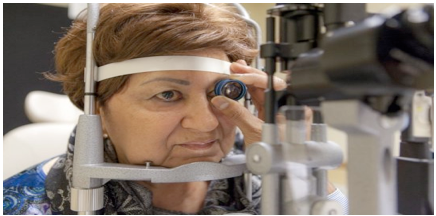LATINO PERSPECTIVE-The University of Southern California (USC) Roski Eye Institute researchers and clinicians published results of the largest population-based study of adult Latinos and age-related macular degeneration (AMD) in the National Eye Institute-funded "Los Angeles Latino Eye Study (LALES)." The study, published in JAMA Ophthalmology, is the first to analyze the risk and prevalence of early and late stage AMD and its impact on quality of life for older Latinos.
According to the National Eye Institute, AMD is a chronic, progressive disease affecting two million Americans and typically diagnosed in those aged 50-60. The LALES study, conducted among 4,876 Latinos in Los Angeles with a mean age cohort of 54.8 years old, indicates that Latinos diagnosed with bilateral AMD with large drusen (the lipids or fatty proteins that are yellow deposits under the retina) and depigmentation, as well as a more severe AMD, had a substantially lower health-related quality of life as compared to those with AMD lesions in only one eye.
"The study results are a wake-up call for both ophthalmologists and those in the Latino community to avoid a quality of life decline due to ocular conditions, especially in earlier stages of eye diseases such as AMD," said Rohit Varma, MD, MPH, interim dean of the Keck School of Medicine of USC and director of the USC Roski Eye Institute. "What was significant but not intuitively obvious was that Latinos diagnosed with AMD in both eyes or more severe AMD had a markedly diminished vision-specific quality of life requiring us to shift our clinical focus from treating advanced stages of AMD to finding earlier stage interventions and treatment options."
The LALES study was conducted among 4,876 participants in six U.S. Census tracks in La Puente, Calif. More than half of the participants were female (59 percent) and 41 percent were male with a median cohort age of 54.8 years. The participants underwent comprehensive eye exams and interviews to assess risk factors for health-related quality of life impact related to either an early or late AMD diagnosis. Photographs of the inside of the eyes were taken to also detect signs of AMD. Typical AMD symptoms are straight lines or faces appear wavy, objects appear smaller or further away and there is blurriness or blind spots in central vision.
The Latino population is the largest minority segment of the U.S. population and is the largest ethnic population in Los Angeles County, surpassing the caucasian population in 2014. According to the U.S. Census 2015 report, Latinos are 17 percent of the U.S. population (55 million) and by 2060 they will be 29 percent (119 million). At the same time, American society has a growing aging population with 10,000 baby boomers turning 65 every day and AMD, an ocular disease that typically affects those age 50 and older, is the leading cause of irreversible blindness.
(Fred Mariscal came to Los Angeles from Mexico City in 1992 to study at the University of Southern California and has been in LA ever since. He is a community leader who serves as Vice Chair of the Los Angeles Neighborhood Council Coalition and sits on the board of the Greater Wilshire Neighborhood Council representing Larchmont Village. He was a candidate for Los Angeles City Council in District 4. Fred writes Latino Perspective for CityWatch and can be reached at: [email protected].) Edited for CityWatch by Linda Abrams.
Explore
Our mission is to promote and facilitate civic engagement and neighborhood empowerment, and to hold area government and its politicians accountable.

 CityWatch Los Angeles
Politics. Perspective. Participation.
CityWatch Los Angeles
Politics. Perspective. Participation.
16
Sun, Nov
















